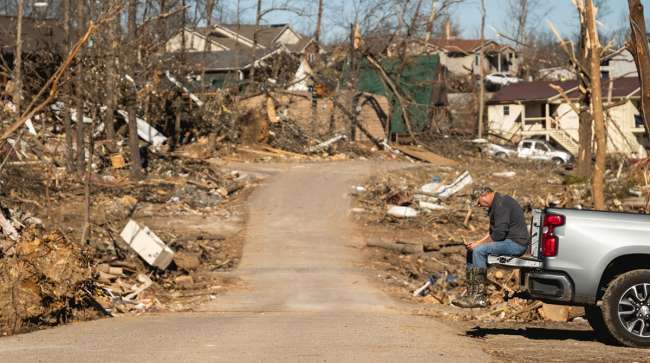Senior Reporter
FEMA Outlines Multiyear Plan, Guidance

[Stay on top of transportation news: Get TTNews in your inbox.]
A multiyear strategic plan recently unveiled by the Federal Emergency Management Agency outlined guidelines ensuring access to freight and commuter corridors during emergencies and preparing for the impact of severe-weather events.
As part of its 2022-2026 strategic plan, FEMA emphasized it intends to target investments for transformational projects that respond to the specific risks posed by climate change. FEMA noted that in 2020 it recorded 22 weather and climate disaster events.
“Climate change represents a profound crisis for the nation, making natural disasters more frequent, more intense and more destructive,” according to the plan.
FEMA 2022-2026 Strategic Plan by Transport Topics on Scribd
“The growing severity of disasters increases the time it takes for communities to recover — a process that can be further complicated by repeat events in areas already struggling to bounce back. These cascading and compounding impacts, propelled by climate change, pose the greatest risk to our communal and nationwide resilience,” per the plan, which is meant to guide officials with emergency readiness.
FEMA also highlighted potential benefits from securing a community comprehensive emergency management workforce. And it prioritized in-depth emergency management training, education and professional development designed to be accessible to community partners.

Criswell
“Climate change is increasing the frequency and severity of disasters. Meanwhile, structural inequities in our society compound the impacts of disasters for historically underserved communities,” FEMA Administrator Deanne Criswell said last month in explaining the strategic plan. “Left unaddressed, these challenges pose unacceptable risks to the nation — and to us as emergency managers.”
She continued, “We must lead the whole of community in climate resilience. We must recognize that we are facing a climate crisis and educate ourselves and the nation about the impacts our changing climate pose to the field of emergency management.
“We must integrate planning for future conditions, move away from incremental mitigation measures and focus on large projects that protect infrastructure and community systems.”
The strategic plan emphasized infrastructure resilience: “Many communities are faced with aging infrastructure, which can increase risk from major disasters. As the frequency of these disasters accelerates, the agency must increase climate adaptation investments across the nation.”

New year, new resilience. Host Mike Freeze and reporters Connor Wolf and Eugene Mulero uncover the lessons 2020 and 2021 taught trucking's business leaders and consider business and legislative solutions in the year ahead. Hear a snippet above, and get the full program by going to RoadSigns.TTNews.com.
Additionally, FEMA seeks to pursue hazard mitigation via the Building Resilient Infrastructure and Communities (BRIC) grant program. Established in 2018 after the enactment of the Disaster Recovery Reform Act, BRIC aims to incentivize innovative infrastructure projects capable of withstanding severe weather events.
At a congressional hearing last year, Criswell proposed, before a panel of federal lawmakers, that emergency preparedness plans adapt to future threats associated with climate change. This was largely in part because climate change is attributed to fueling massive weather-related events credited with the destruction of commercial and passenger transportation corridors.
“Climate change affects every single American. It is the biggest crisis facing our nation, and it is making natural disasters more frequent, more intense and more destructive. Mitigating the effects of climate change is one of my top priorities for FEMA,” Criswell told U.S. House lawmakers during a hearing examining the federal response to Hurricane Ida and other severe-weather events. “Hurricane Ida has demonstrated the challenges presented by our changing climate, the benefits of mitigation investments and the importance of equity in our response and recovery.”
Want more news? Listen to today's daily briefing below or go here for more info:


